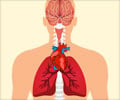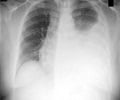Although the rapid strides made in technology have produced increasingly targeted drugs, Mother Nature still has a lot to offer as far as medicine is concerned.

Its complex three-dimensional structure allows it to act simultaneously on two parts of a key enzyme in the tuberculosis bacillus, and in doing so, dramatically reduce the risk that the bacteria will develop multiple resistances. The researchers, along with their colleagues at ETH Zurich, have published their results in the journal Nature Chemical Biology. Stewart Cole, director of EPFL's Global Health Iabilitynstitute, led a team that discovered the anti-tuberculosis effect of pyridomycin in 2012.
By inhibiting the action of the "InhA" enzyme, pyridomycin literally caused the thick lipid membrane of the bacterium to burst. Now the scientists understand how the molecule does this job. Dual anti-mutation ability The tuberculosis bacillus needs the InhA enzyme along with what scientists refer to as a "co-factor," which activates the enzyme, in order to manufacture its membrane. The scientists discovered that pyridomycin binds with the co-factor, neutralizing it. But pyridomycin doesn't stop there.
It also blocks another element needed for making the membrane, the InhA binding site. "Researchers in the pharmaceutical industry have been looking for this weakness in the TB bacillus for decades," explains Ruben Hartkoorn, first author on the article. By binding simultaneously onto these two elements and neutralizing them, pyridomycin prevents the bacterium from generating its membrane, and it ends up bursting like a balloon. Better still, this dual action drastically reduces the risk that the bacteria will become resistant, because in order to develop resistance, two different specific mutations must exist at the same time. This is increasingly important because cases of multi-resistant TB are on the rise.
Nature's twisting paths – a lesson in efficiency "It's a powerful lesson from nature with respect to drug design," explains Cole, co-author and EPFL professor. "The three-dimensional structures of naturally occurring molecules are often more complex, more twisted, than synthetic molecules, and that's precisely what allows pyridomycin to bind onto these two sites simultaneously." In fact, it binds so effectively that the molecule is not yet ready to be used therapeutically: it doesn't last long enough in the patient's body. This is the point at which bioengineering needs to take over from Mother Nature – to develop a more robust version of the molecule. This is what the ETH team led by Karl-Heinz Altmann is working on. "Eventually we could multiply the molecule's binding sites, so that it could inhibit critical functions of other pathogenic bacteria," says Cole.
Advertisement














